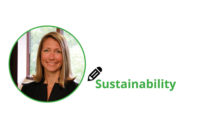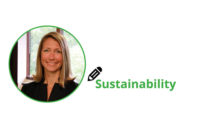 “Sustainability” means different things to different people. Asked to identify what the term means to them, consumers most frequently respond “the ability to last over time” (53 percent). Yet as part of a growing cultural “eco-consciousness,” this view has broadened over the years to include environmentally-linked definitions like “conserving natural resources” (42 percent) and “reduce, reuse, recycle” (42 percent).
“Sustainability” means different things to different people. Asked to identify what the term means to them, consumers most frequently respond “the ability to last over time” (53 percent). Yet as part of a growing cultural “eco-consciousness,” this view has broadened over the years to include environmentally-linked definitions like “conserving natural resources” (42 percent) and “reduce, reuse, recycle” (42 percent).
As consumers become more educated about the environmental, social and economic implications of their shopping habits, their health and wellness motivations dovetail with societal concerns, such that four zones of sustainability become relevant to purchasing choices. All four zones have characteristics that relate to key beliefs shared by consumers when it comes to making sustainable purchases. In fact, many of the attributes that generally describe quality eating experiences, including freshness, organic and local, also resonate as sustainable in the food category:
- Personal Benefit Zone: personal safety, nourishment and vitality, and enjoyment.
- Environmental Zone: responsible farming practices, fewer food miles, and packaging and waste.
- Social Zone: ethical treatment of animals and connection to local food producers.
- Economic Zone: community support and fair trade practices.
Diverse trends intersecting between consumer interests in sustainability and health and wellness are forging new opportunities for food producers and retailers today. Marketing relevant to consumers in these areas can be achieved simultaneously by appealing to personal benefits that link to individual and familial health and safety, as well as to higher-quality, premium food experiences. Key attributes that link directly to sustainable personal benefits include fresh, organic, local, heritage/heirloom, seasonal and artisanal.
In grains and snacks, we see these attributes exemplified by rising interest in “ancient grains”—amaranth, chia, farro, millet, quinoa and others—as well as the redefinition of formerly everyday snack categories like popcorn (heirloom and premium).
Other noteworthy trends include:
Transparency and the story behind food production. Consumers are expecting more from food and from the companies that produce it, not strictly from a safety perspective, but because of an overall increasing cultural interest in food.
Rising consumer engagement with the world of food, enabled by technology. For example, consumers post pictures of their food on Pinterest, Facebook and Instagram. Food to most consumers today is about enjoyment, passion, love and taking good care of their families. They are using technology to communicate their passion.
We are becoming more a nation of eaters than of cooks. As a result, consumers are becoming more excited about food and are relying on manufacturers and retailers to do more of the work for them.
Snacking—at 53 percent of all eating occasions—takes place more than meals. But today, snacking isn’t about just eating foods traditionally concerned unhealthy. On more than 50 percent of snacking occasions, consumers are looking for healthful products and attributes linking to sustainability.
While many popular quality cues underlying growth in the food market today have direct linkages to sustainability in consumers’ minds (for example, organic, local and premium), other characteristics beyond food descriptors continue to be of importance when consumers are asked about sustainability: These include concerns about packaging and waste, animal welfare and worker conditions.
Therefore, in the days ahead, food stakeholders will need to keep a broad view on what factors make up “sustainability,” especially when it comes to consumers.






